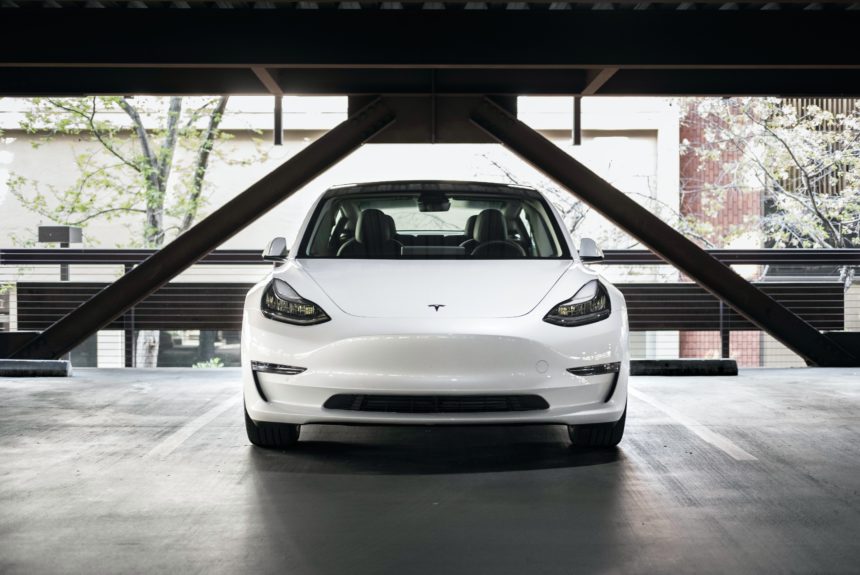Dear EV Industry,
I hope you are well.
I am pleased to let you know that I have leased my first EV, a Tesla Model 3, and have really enjoyed having it. It’s fun to drive, costs pennies to charge, and overall the customer experience has been good.
In the spirit of constructive feedback, however, please allow me to provide opportunities for improvement.
First and foremost, you should address charging stations. With the exception of Tesla, they seemed to have missed the fact that they need to interact with humans who don’t speak electricity. If you want to compete with gas cars, then make your EV charging stations like gas stations.
Charging stations, like gas pumps, should be labeled 1, 2, 3, 4, …. not “Port -1, Level 2 – 6.24kW, BAE908384”. I’m not kidding, this is what I get when I go to use Blink’s charging stations. What the heck! Again, kudos to Tesla, where I can charge at their super charging stations by literally just plugging in the cord and walking away.
>>>READ: Joe Biden: Car Dealer in Chief
Design your stations to take credit cards, just like a gas pump. Consumers shouldn’t have to download an app, sign up for an account, verify their email, and then go on a virtual map scavenger hunt for the station where their car is already parked, and then hunt for the option to charge on the app, which ironically isn’t right in front of your face. Then, once charging can begin, the app shows “Current speed: 6.21kW” with a few other stats, but nowhere does it say how much money I’m spending by the minute. Again, consumers don’t speak electricity and shouldn’t have to. Show them how many miles they are buying at what price and how much time is left.
To give you a personal example, in my first adventure to charge my new Tesla, I had to visit four charging stations to finally charge my car. The first one had two “universal” chargers, and even though my car had an adapter, the cables didn’t fit.
You would think that the touch screen would simply ask me what kind of car I have and then tell me if it’s compatible with their chargers, but no. So I called their helpline and, to their credit, did get a human being. But as nice as she was, her first question to me was “What kind of charger do you need? Is it a xyz1234 whatever charger?” To which I said “How should I know? I told you that I have a Tesla Model 3, so how about you tell me what kind of charger I need and if this charging station will work or if you have any nearby stations?” After 5 minutes of searching, she found a station “just” 15 miles away.
Next, I went to the one at my city hall. Good news, my adapter fits! So then I took my phone and scanned the QR code, which led me to an app, which asked me to sign up for an account, which made me enter in a bunch of personal information, and then sent me an email to confirm, and then back to the app, and success! Or not quite yet. I then had to pull open the map, find my location, zoom in on the nearest station, and find my specific “pump” (my words). Once I found that, it was another adventure to figure out how to start charging, but alas I did finally figure it out.
Secondly, make sure to walk customers through their car for the first time. Just because your car can be started and controlled on an app doesn’t mean that new EV car buyers know everything about how to operate the vehicle. Tesla, I’m looking at you.
>>>READ: What’s Going on with Electric Vehicles?
Picking my car and scheduling an appointment was relatively easy. Even signing the lease, with some complications, wasn’t horrible. When I finally got my car, I asked the representative if I needed to know anything about the car before I drove it for the first time. “No,” he said, “there’s a customer tutorial on the screen that tells you everything you need to know.” Ok. Game on. So I got in the car and for 10 minutes tried to figure out how to start it (you don’t), and how to put it in Drive (you have to have the app open), and who knew that opening a glovebox could be so complicated!
There’s definitely been a learning curve and you could try to blame it on my middle-age status, but I’m pretty tech-savvy (founded and own a solar company and founded an energy innovation nonprofit). In the end, chalk it up to me being human.
So, EV Industry, please work on your human interfaces and remember that people don’t speak electricity.
Lastly, don’t get a big head about being “clean”. It’s true and important that you don’t have tailpipe emissions, which is particularly good for our clean air quality in cities. But, as you know from coming under attack lately, the environmental footprint of your product starts with mining (often through unsustainable means), moves to processing chemicals, and then to manufacturing, all of which requires a lot of energy. So while you don’t have “tailpipe” emissions from your cars, you do have emissions throughout the manufacturing process, including at the “tailpipe” stack at the power plant. You also need to address the environmental impact of your tires, which, as recent studies have shown, are a significant source of fine particulate matter.
In the end, you have a great product and I’m proud to be driving my first EV. Just don’t get cocky and keep on innovating.
The views and opinions expressed are those of the author’s and do not necessarily reflect the official policy or position of C3.
